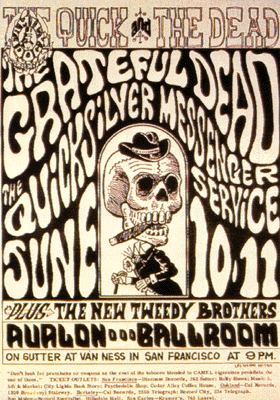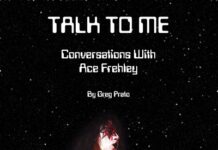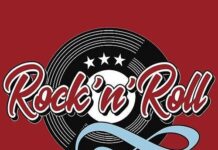by Dave Gardner
The late sixties was surely a peak in the short history of Vintage Rock. Perhaps there was no better location to spring forth the exuberant sounds that flowed out of the city by the bay. Bands like Tikis, Mojo Men, The Knight Riders and the Beau Brummels were beginning to create a different vibe throughout the music industry. Though they had little impact on the mainstream, the local musicians quickly picked up on the free form styles, and soon adopted the attitude of “anything goes…”
In 1966, San Francisco was boiling over with talented artists of all varieties. Pantomime and theater groups infiltrated the streets while the musicians, of one form or another, joined in. Spearheading the revolution, The Great Society, featuring Grace Slick, would unleash two of the scene’s most important tunes. Some say “Somebody To Love” and “White Rabbit” more or less opened the door to psychedelia.
It all developed from a simple gig. Paul Kantner put together the Jefferson Airplane with Marty Balin. One night the Airplane and The Great Society were playing at Balin’s club, the Matrix. Grace Slick naturally fell with the Airplane, and she brought her material with her. Months later, RCA released “Surrealistic Pillow,” and exposed the world to “Somebody To Love” and “White Rabbit.” Suddenly, all eyes were on San Francisco.
The Airplane had some great friends too. Among them: Jerry Garcia and the Grateful Dead, who, in turn, had lots of other friends. There was a scene brewing unlike anything before or since. Much of this had to do with large quantities of LSD being produced by Owsley Stanley, a local chemist and sound guru. Bands like Moby Grape and Blue Cheer were kicking in with lots of strange, experimental sounds. It’s a Beautiful Day released “White Bird,” a solemn ballad that drew attention to the city. By the time the Summer of Love rolled around in 1967, just about any Bay Area outfit had a recording contract.
But perhaps it was Janis Joplin with her band Big Brother & The Holding Company that really captured the heart and soul of what San Francisco was all about. Joplin’s unique voice was an instrument in itself, and she quickly gained national prominence because of it. The album, “Cheap Thrills,” recorded live at Bill Graham’s infamous Fillmore West, remains a true classic of the era.
When the Monterey Pop Festival came in 1967, Janis and The Grateful Dead more or less represented San Francisco. Both encouraged several jams sessions that took place with Jimi Hendrix, The Who, Otis Redding, The Mamas and Papas, and Brian Jones. The Grateful Dead were, of course, at their most experimental stage, releasing wild albums of psychedelic music like “Anthem of The Sun” and “Aoxomoxoa.”
Still, more and more talent emerged. A young Carlos Santana came in from the shadows of the local scene. Santana was given a break by Bill Graham, and eventually unleashed his universal guitar stylings with Fleetwood Mac’s “Black Magic Woman” and “Evil Ways.” Other bands like Cold Blood and Country Joe and The Fish were also contributing with their own brand of unusual and experimental musings. The Fish were an especially talented bunch who would gain notoriety at Woodstock for their anti-war rants.
Some of the musicians started dabbling with acoustic guitars. David Crosby drifted up from L.A. and invoked his influence on a lot of San Francisco musicians. His harmonies and soft acoustic guitar are splattered over several records from the era. His own solo album, “If I Could Only Remember My Name,” is like a who’s who of San Francisco musicians.
By 1969, the amount of music coming out of San Francisco was mind boggling. The Dead continued on their experimental route, taking it to the people. Much of their live material was released, making way for “Dark Star and “St. Stephen” to become the classics of years later. The Airplane came out with “Crown of Creation” and “Volunteers,” taking their music to new heights.
Out of some of the live jams, the Paul Butterfield Blues Band with Elvin Bishop and Mike Bloomfield started meshing with a lot of other players. They were often called in to sit in for absent band members. Many bands actually started to go through lots of personnel changes. Moby Grape was one band who went through several incarnations. Other players split to start new bands of their own.
The New Riders of the Purple Sage was a revolving door for players. But they also had a lot of strong support. With Jerry Garcia on pedal steel guitar and Phil Lesh producing, their first album received an instant stamp of approval. Their country flavor gained them the label of the Day Glo Cowboys.
Side projects made way for solo albums. Country Joe did a solo record. Bob Weir even released a solo album, fully supported by the Grateful Dead. Paul Kantner launched his new Starship. “Have You Seen The Stars Tonight” and “Blows Against The Empire” were albums of great artistic expression. Kantner also teamed up with Grace Slick on “Sunfighter,” another interesting tidbit from the period. David Frieberg, the bassist from Quicksilver Messenger, joined Slick and Kantner, and produced the album “Baron Von Tollbooth and The Chrome Nun,” one of my favorite psychedelic albums. (Check out Jerry Garcia on “Fishman”)
Hot Tuna — an acoustic band fronted by the Airplane’s Jorma Kaukonan and Jack Cassidy — brought in Papa John Creech and went electric. Santana also recruited many players, including Journey’s Neal Schon and Gregg Rolie, and put out the wonderful “Abraxas.”
Janis Joplin also made a change — to please her record company, who were spending big bucks to polish her sound. Big Brother’s raunchy sound apparently wasn’t commercial enough to sustain her popularity. Full Tilt Boogie, a group of session musicians, was brought in to produce her “Pearl” LP.
Bill Graham was instrumental in keeping the scene alive. Live shows at the Fillmore kept the Grateful Dead jamming for hours on end. The New Riders of the Purple Sage, who kept on releasing classics like “Powerglide” and “The Adventures of Panama Red,” opened many of those shows.
With the dawn of the 70’s, many things took a turn for the worse. Janis Joplin died and Haigh Ashbury was never the same. Bands like Quicksilver and the New Riders stayed together, but the Airplane withered away, evolving into a full blown Starship. Starship infused some of the drug influence into its “Dragon Fly” album, but it was obvious things were changing.
The Dead also lost one of its members. Pigpen, long regarded as the soul of the band, passed away. The Dead shifted into several different modes afterwards, and eventually came to embody the San Francisco music scene. Santana, with his heightened spiritual level, is another artist who has endured.
A large part of the soundtrack of the late 60’s can certainly be traced back to the sounds of San Francisco. It was certainly a wonderful time for music.




















